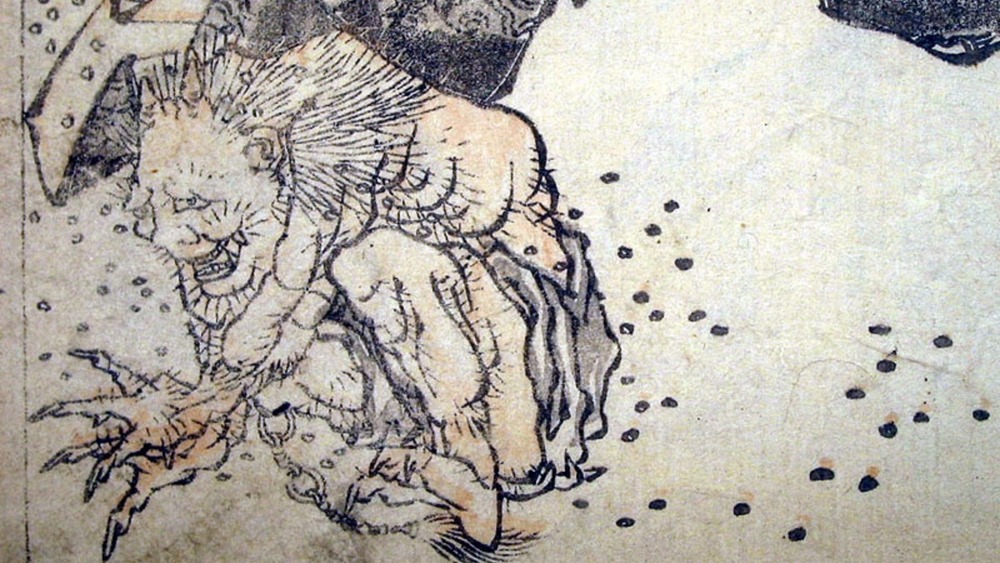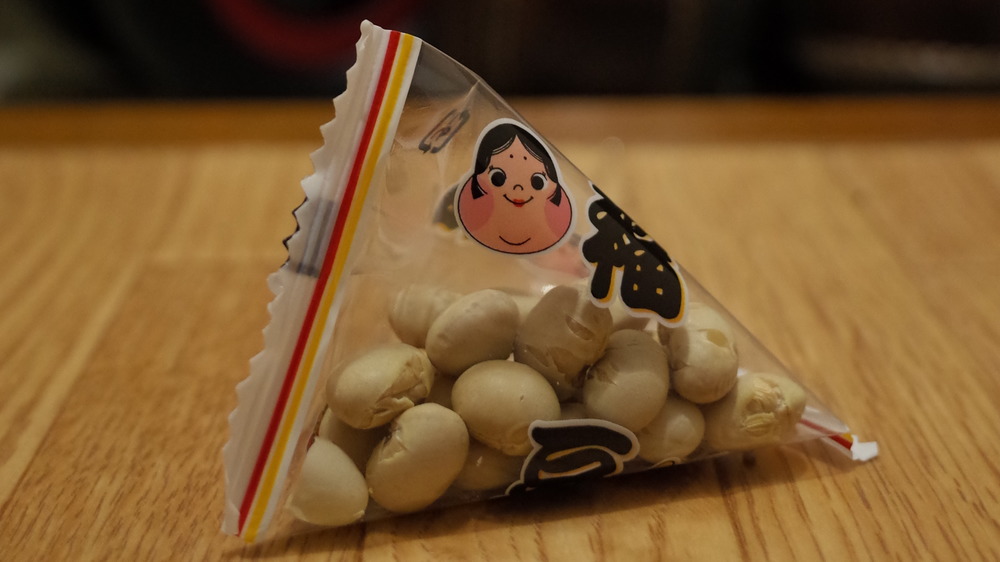Setsubun: The Japanese Festival Of Throwing Beans At Demons
The culture and history of Japan has long since caught the attention of the international community. Thanks in large part to its romanticized, storied medieval era (you know: samurai and ninja), pop cultural artifacts spawning from manga and anime, and curiosities like maid cafes and paid cuddle time, Japan has cemented its place in the mind of the globe. There are a lot of small Japanese customs that many folks know about, like taking your shoes off indoors, and others that are less well-known, like how it's rude to stick your chopsticks in rice because the act belongs to Shinto and Buddhist funereal practices.
Festivals and holidays are a big part of life in Japan, as well. Obon in August, ostensibly a Halloween-like holiday to honor the deceased (per Savvy Tokyo), is really just an excuse for people to travel, as is Golden Week, a collection of back-to-back holidays in early May (per Live Japan). Seijinshiki in January is a coming-of-age day that sees 20-year-olds dress in traditional garb and pose for lots of pictures (per Tokyo Creative), while Hina Matsuri (Girl's Festival) in March involves placing tons of little dolls everywhere "to commemorate the growth, happiness, and prosperity of young girls" (also per Live Japan).
One festival, though, that usually attracts a lot of kids — and adults in costumes — is Setsubun. If you see kids throwing dried soy beans at adults who are dancing in cloaks and wearing furry demon masks in parks or at schools come February 2-4: bingo.
A festival with roots in China to ward off bad spirits
On the surface, that's exactly what Setsubun looks like: kids throwing dried soy beans at adults dressed in demon costumes, like a Western, Halloween-themed wedding, but with more resilient projectiles. Therein lies a clue, though: beans hit with greater impact than rice, as the Japanese magazine DIME describes. And that's exactly the purpose of throwing the beans at the demons: to ward off evil spirits and keep a household safe. When people throw the beans, they're supposed to say, "Oni wa soto! fuka wa uchi!" — "Demons outside, goodness inside!" The demons are symbolic of sickness, poverty, sorrow, or anything else no one wants in their home.
Where does this all come from, exactly? The earliest roots most likely reside in China, much like kanji (complex Japanese syllabic characters) and Buddhism (by way of Korea from China), or more recently, every college student's favorite dinner: ramen. Officially, as Savvy Tokyo outlines, the tradition visibly cropped up in Japan during the Muromachi period (1337-1573 CE). Nowadays, things vary slightly from region to region, but are more or less the same nationwide. In fact, this is all so common in Japan, and such an integral part of childhood, that come early February you can just stroll into a local supermarket and snag packs of to-go beans marketed specifically for Setsubun no Hi, the official name of the day.
The crazy wordplay of demon-destroying beans
Historically, the word "Setsubun" didn't only belong to this winter-to-spring bean-throwing festival, but rather it was a general term used to denote a change in seasons. The current Setsubun is just the only one that stuck over time. The kid-friendly connection to the event sort of happened naturally, we assume, as, a) kids love throwing things, b) it's easier to represent sorrow as a outward monster than an inward experience, and, c) all the boring adults felt too silly to throw beans, but not too silly to wear a funny costume.
Why beans? Sure, they're easier to throw than rice (and easier to pick up and not waste), but there's a bonkers linguistic reason why beans, too. The Japanese word for beans — no specific type — is mame (that's pronounced as two syllables — "mah-meh"). The first syllable, ma is a homophone for another ma, which is used to describe demons, devils, and other black magical things. The second syllable, me, is similar in sound to metsu, which means "destruction." So phonetically: mame (bean) sounds like mametsu (destruction of demons). Also, me sounds like mei, or "eyes" (again, two syllables — "meh-ee"). And demons have creepy, maybe bean-like eyes that peer at you before you pelt them with beans. (And you thought English had some crazy wordplay, huh?)
If you're down for some study, there's Setsubun-and-demon-related wordplay posted at the Japan Times.


